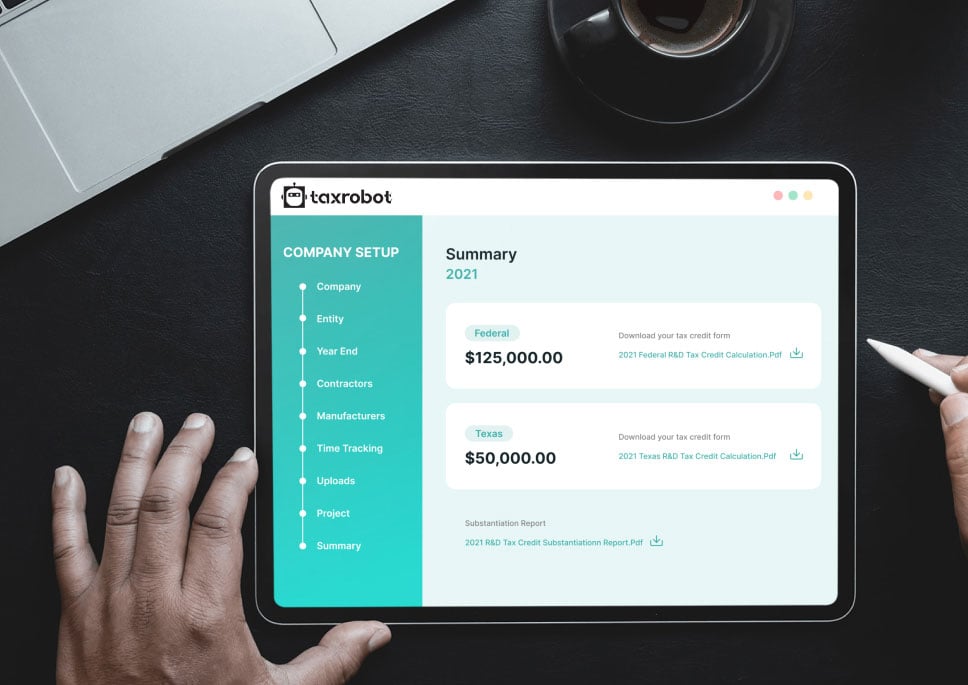New York R&D Credit
Make sure you take full advantage of the R&D tax credits available to your New York business.
Maximize your State Credits today!
Put the R&D tax credit process on autopilot.
Trusted By:








New York R&D Credit
Discover your eligibility for New York R&D tax credits and supercharge your enterprise.
Are There R&D Tax Credits For New York?
Yes, there are R&D tax credits available in New York. These tax credits are part of the Excelsior Jobs Program, which contains several other tax credits alongside the R&D tax credits.
This credit is currently available from the tax year starting on January 1, 2018, to the tax year before January 1, 2028.
Federal R&D Tax Credit
The New York R&D tax credit is based on a portion of the Federal Research and Development tax credit. It specifically relates to qualifying expenses made within New York.
The New York tax credit is also heavily based on the federal tax credit. This includes the type of expenses that qualify for the credit.
Qualifying Businesses
Not every business qualifies for this tax credit. Only specific businesses that meet specific conditions are eligible.
These include:
- Scientific Research and Development firms
- Must create at least five net new jobs
- Software Development firms
- Must create at least five net new jobs
- Financial services (customer service) back office operations
- Must create at least 25 net new jobs
- Agriculture firms
- Must create at least five net new jobs
- Manufacturing firms
- Must create at least five net new jobs
- Back office firms
- Must create at least 25 net new jobs
- Distribution firms
- Must create at least 50 net new jobs
- Music Production firms
- Must create at least five net new jobs
- Entertainment Companies
- Must create at least 100 net new jobs
- Life Sciences Companies
- Must create at least five net new jobs
- Other firms
- Must create at least 150 net new jobs and invest at least $3 million
Alt text: A person working on coding in front of multiple computer screens
Do Your Expenses Qualify?
Expenses that qualify for the New York R&D tax credit are the same as those that qualify for the federal tax credit. This means that they must all pass the four-part test. These expenses must:
- Be technological in nature
- Be of a permitted purpose, including improving or developing a new or existing business component
- Eliminate technological uncertainty
- Follow a process of experimentation
Green Projects
However, in New York, not all expenses apply in the same way. The state has many initiatives designed to support green projects. For taxes, a green project qualifies for a larger tax credit.
There are additional qualifications necessary to classify something as a green project. The companies attempting to make this classification must be within the agriculture, manufacturing, software development, or scientific research and development industries. Their project must be involved in making a product or developing technology that primarily aims to reduce greenhouse gas emissions or support green energy.
How Much is the New York R&D Tax Credit
The New York R&D tax credit amount is calculated using 50% of expenses that qualify for the federal R&D tax credit and that are also conducted within New York. However, this amount is subject to certain limitations. Research expenditures within the state are limited to 6%. Meanwhile, qualified green projects are limited to a larger amount, at 8%.
The credit must be filed with the Empire State Development regional office.
Get the Most Out of Your R&D Expenses with Tax Robot
There is a lot that goes into determining your New York R&D tax credit. You need to first calculate your federally-applicable expenses. Then, you need to make determinations and perform calculations to see what portions are eligible for what credits. All of this adds up to a lot of complexity and potential for error.
This is where Tax Robot can help. We offer tax credit software and advice that simplifies this entire process. This makes it easier to handle your New York R&D tax credit alongside the federal R&D tax credit.
Calculate Your Tax Credit
If you’re curious about how much you can get from this tax credit, you don’t have to wait in suspense. Use our calculator to get an estimate!
Take a sneak peak

- Limited Time Offer
- Simple Onboarding
- Easy to Use
R&D Tax Credits FAQs
The four-part test as outlined in the Internal Revenue Code is used to determine qualified R&D activity.
The Four-Part Test
1). New Or Improved Business Component
Creation of a new product, process, formula, invention, software, or technique; or improving the performance, functionality, quality, or reliability of existing business component.
- Construction of new buildings or renovation of existing buildings
- Invention of a software application
- Manufacturing of a new product or the improvement of the production process for an existing product
- Creation of design documentation
2). Technological In Nature
The activity fundamentally relies on principles of the physical or biological sciences, engineering, or computer science. A taxpayer does not need to obtain information that exceeds, expands or refines the common knowledge of skilled professionals in a particular field.
- Physics (relationship between mass, density and volume; loading as the
result of gravitational attraction) - Engineering (mechanical, electrical, civil, chemical)
- Computer science (theory of computation and design of computational systems)
3). Elimination Of Uncertainty
Uncertainty exists if the information available to the taxpayer does not establish the capability or method for developing or improving the business component, or the appropriate design of the business component.
- The capability of a manufacturer to create a part within the specified tolerances
- The appropriate method of overcoming unsuitable soil conditions during construction
- The appropriate software design to meet quality and volatility requirements
4). Process Of Experimentation
A process designed to evaluate one or more alternatives to achieve a result where the capability or method of achieving that result, or the appropriate design of that result, is uncertain as of the beginning of the taxpayer’s research activities.
- Systematic process of trial and error
- Evaluating alternative means and methods
- Computer modeling or simulation Prototyping Testing
The R&D tax credit is one of the most misunderstood tax incentives available. Considering the myriad of industries and activities that legally qualify for the credit, the term “research and development” is a misnomer. Additionally, the R&D tax credit requires specialized knowledge and technology to identify and calculate the incentive properly.
Companies of various industries are unaware that they are eligible to claim the R&D tax credit. Under the Internal Revenue Code’s definition of R&D, many common activities qualify. You can get tax benefits for industries including software, technology, architecture, engineering, construction, manufacturing, and more.
The R&D tax credit can be claimed for all open tax years. Generally, open tax years include the prior three tax years due to the statute of limitations period. In certain circumstances, the law allows businesses to claim the R&D tax credit for an extended period of time. It is common for companies to amend previous tax years to claim this benefit and reduce the maximum amount of tax liability.
Partnerships and S corporations must file this form to claim the credit. The credit will flow from the Form 6765, to the Schedule K-1, to the Form 3800 on the individual’s tax return. For individuals receiving this credit that have ownership interest in a partnership or S corporation, Form 6765 is not required on the individual return.
Individuals claiming this credit can report the credit directly on Form 3800, General Business Credit if their only source for the credit is a partnership, S corporation, estate, or trust. Otherwise, Form 6765 must be filed with the individual’s tax return (e.g. sole proprietorship).
For tax years prior to 2016, the credit can be used to reduce the taxpayer’s regular tax liability down to the tentative minimum tax. The credit cannot be used to offset alternative minimum tax. Beginning in tax year 2016, eligible small businesses have expanded utilization for the credit. For these eligible small businesses, the regular tax liability can offset alternative minimum tax using the “25/25” rule.
What our customers have to say
I highly recommend TaxRobot to anyone considering an R&D Tax Credit software to complete their analysis.

We decided to switch to TaxRobot… Best decision we’ve ever made. More affordable, and less complicated.

I couldn’t believe how easy it was! In under an hour, we saved enough money to hire a new employee.
